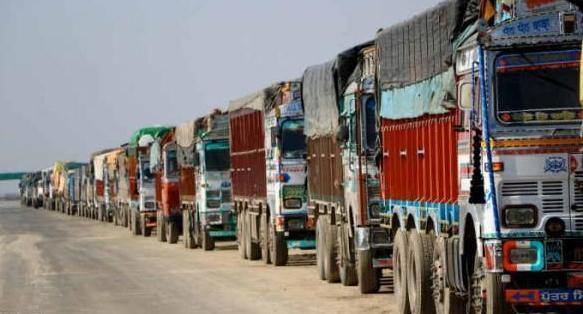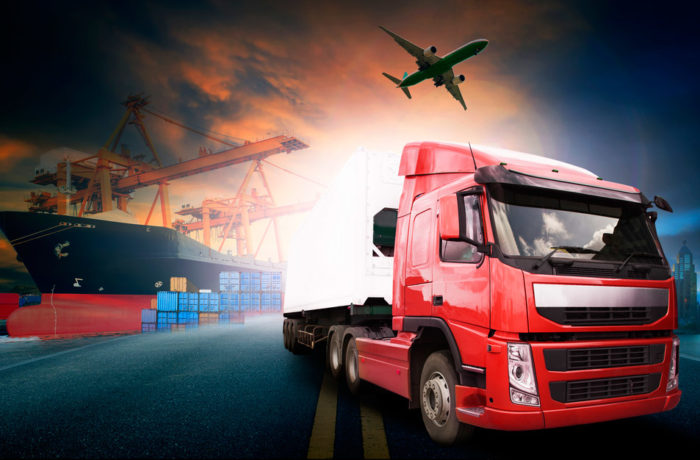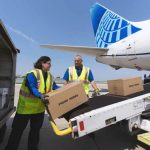Fast-tracking freight in India
Commercial activities in India generate about 4.6 billion tons of freight annually, which results in over 3-trillion-ton-km of transportation demand costing US$100 billion. By 2050, the country’s freight ecosystem is projected to grow five-fold and will be critical in supporting its global trade, job growth, urban and rural livelihoods as well as clean air and environment.
By R. Chandrakanth
India needs to fast-track its available resources and infrastructure to seamlessly transport freight of all kinds across the country to support its ambitious economic and social goals while protecting its environment in the 21st century.
The NITI Aayog, which serves as the apex public policy think-tank of the Government of India, and the nodal agency tasked with catalyzing economic development, along with RMI, an independent nonprofit think-and-do tank pointed this out in its 2021 report, a roadmap for clean and cost-effective goods transportation.
India has been recognized as one of the world’s fastest-growing major economy for the past few years, due to rising demand for goods and services. The movement of goods across the country and beyond its borders has created economic opportunities for millions of Indians.
Today, the logistics sector represents 5 percent of India’s Gross Domestic Product (GDP) and employs 2.2 crore people. India handles 4.6 billion tons of goods each year, amounting to a total annual cost of over Rs. 120 billion. These goods represent a variety of domestic industries and products: 22 percent are agricultural goods, 39 percent are mining products, and 39 percent are manufacturing-related commodities.
Trucks and other vehicles handle most of the movement of these goods. Railways, coastal and inland waterways, pipelines, and airways account for the rest.
Government initiatives to improve logistics performance
Recognizing the critical role of the sector in the country’s future, the Government of India (GOI) is pursuing a range of actions to improve its logistics performance. These include the development of dedicated rail-based freight corridors, improvements to the capacity and connectivity of coastal and inland water-based shipping and airport connectivity through the regional connectivity scheme.
It is also looking at the buildout of road infrastructure projects such as Bharatmala and the Golden Quadrilateral, and the creation of supportive policies.
As national freight activity grows about five-fold by 2050, India’s freight transport ecosystem has a critical role to play in supporting India’s ambitious priorities. Some of these include international competitiveness, job growth, urban and rural livelihoods, and clean air and environment.
Energy consumption
 The report said India’s cumulative energy consumption from freight transport between 2020 and 2050 under a business as usual (BAU) scenario will be around 5.8 billion tons of oil equivalent (TOE). However, India can reduce this energy consumption by 50 percent under an efficient scenario through three opportunity areas: Increasing the share of rail transport; Optimizing truck use; and Promoting use of fuel-efficient vehicles and alternative fuels.
The report said India’s cumulative energy consumption from freight transport between 2020 and 2050 under a business as usual (BAU) scenario will be around 5.8 billion tons of oil equivalent (TOE). However, India can reduce this energy consumption by 50 percent under an efficient scenario through three opportunity areas: Increasing the share of rail transport; Optimizing truck use; and Promoting use of fuel-efficient vehicles and alternative fuels.
These opportunities will also lead to reduced logistics costs; reduced carbon emissions and improved air quality; less truck traffic on roads, etc. India has set a target of reducing the logistics costs as a share of GDP from 14 percent currently to 10 percent by 2022, which can save up to 100 billion dollars.
India can save 10 giga tons of CO2, 500 kilo tones of particulate matter (PM) and 15 million tons of nitrogen oxide (NOx) caused by freight transport by 2050. Improved mode share and efficient logistics can reduce the vehicular-freight activity by 48 percent in 2050 over a BAU scenario.
This new freight paradigm will also lead to higher economic growth, more employment opportunities, better public health, and enhanced logistics productivity, which will meet many of India’s development goals.
India’s logistics sector comprises over 10,000 types of products and has a market size of US$110 billion. It is expected to grow to a market of US$150 billion by end 2022.
India generates 4.6 billion tons of freight
Currently, commercial activities in India generate about 4.6 billion tons of freight annually, which results in over three trillion ton-km of transportation demand at a cost of US$100 billion. This demand for freight transport has been rising as the population has grown and standards of living have improved, leading consumers and business to demand and consume more goods.
Between 2015 and 2020, India’s GDP grew by 32 percent to 217 lakh crores —making India the sixth largest economy in the world. In the same decade, India’s population also increased by 5 percent, while freight demand increased by 28 percent.
With rising income levels, higher exports, a rapidly growing e-commerce sector, a growing retail sales market, and a projected GDP growth of seven to eight percent in the next five years, the demand for goods movement is also expected to increase at 7 percent Compound Annual Growth Rate (CAGR). As the demand for goods continues to grow, moving them is expected to increase to 15.6 trillion ton-km in 2050.
This activity will spur growth across freight modes, but especially in road-freight transport. This will lead to over three trillion kilometers travelled on Indian roads by freight vehicles in 2050. To meet this demand, India has been continuously improving its logistics system.
LPI score moves up
India had improved its score on the Logistics Performance Index (LPI), a World Bank tool, commonly used to measure a country’s logistics capabilities, from 3.07 to 3.42 between 2007 and 2016. This progress came from improving infrastructure, introducing policies and programs like Make in India, Regional Air Connectivity Scheme and incorporating technological and digital improvements in the logistics supply chain. However, much work remains to be done.
Despite being one of the world’s biggest and fastest-growing logistics industry India’s LPI only ranks 44th in the world. This ranking can be improved by tapping into the opportunity areas outlined in the report.
While container movement in India is rising, the share of intermodal rail freight transport remains relatively low. While the total container traffic in India increased at a CAGR of 9 percent between 2010 and 2018, intermodal transport was responsible for a small share.
Over-the-road (OTR) truck transport ferried most of the containers from origin to destination. For example, in the Western region corridors, which account for 70 percent of India’s container movement, intermodal rail transport is responsible for only one-third of the share.

Multimodal transportation growing
With supporting government initiatives and market structure, the share of intermodal transport in India is growing. In 2017, the government sanctioned US$2 billion for building 35 multimodal logistics parks across the country.
These logistics parks are expected to handle 50 percent of the road freight activity and reduce total logistics costs by 25 percent. The Indian government plans to create a central authority called Multi-Modal Logistics Park Authority (MMLPA) with representatives from relevant ministries.
It is proposed to develop logistics parks in 15 cities with highest freight movement (covering more than 40% of the total road freight movement in India) 8 in Phase I of the program. Logistics parks in the next 20 nodes (accounting for 20% of the total road freight movement in India) can potentially be developed in the next phase. The MMLPA will help identify optimal locations and ensure MMLPs function correctly.
India has built a network of almost 300 Inland Container Depots, which are the key to enable multimodal transport as they enable better integration between road and rail and air too. The government has announced plans for new rail-side logistics parks and warehouses to upgrade freight terminal infrastructure.
India’s logistics costs are currently 14 percent of the GDP—higher than the United States and Europe. Over 90 percent of logistics costs are attributable to transportation and inventory management. To increase logistics efficiency, the report said it is essential to increase transportation efficiency by optimizing truck use and incorporating inventory management best practices in supply chains.
Obsolete Infrastructure and vehicles
Low carrying-capacity trucks make up the majority of India’s truck fleet. In India, most trucks are MDVs or smaller HDVs. In nations and regions, like the United States and the European Union, the truck market mainly consists of HDVs.
Trucks in India usually have smaller engines and thus operate at lower speeds. Most of the trucks on the road are old. About 34 percent of India’s truck fleet has been on the road for at least 10 years.
India’s roads are not well-suited for heavy vehicles. Only 54 percent of roads are surfaced with concrete,150 limiting the plying of heavy trucks for freight transport. Also, four to six lanes national highways are limited but growing.
Obsolete Technologies
Transportation practices like load planning and vehicle routing are not digitized, standardized and automated. For example, there is a limited use of radio-frequency identification (RFID) tracking and a lack of real-time visibility into inventory flow.
The procedures and equipment to execute processes such as material loading, unloading, and storing are not standardized, leading to widespread use of slow, inaccurate manual processes.
There is a lack of automation of common warehousing operations. This leads to excess inventory holdings by decreasing the speed through which the goods move across the supply chain, and inventory loss as operators do not have proper visibility into inventory stocks and locations.
Fragmented market
India’s trucking market is highly fragmented. Around 75 percent of the market is run by small owner-operators who own up to five trucks. Only 10 percent of the market is run by big fleet operators who own more than 20 trucks.
Small players are unable to optimize driving patterns and have less ability to invest in larger trucks, digital tools and software, and the expertise required to operate them. This market structure leads to lower asset utilization and overloaded trucks.
The warehousing sector in India is also highly fragmented, with unorganized players owning 90 percent of the market. Most warehouses are small and local instead of regional. Few have accessible connections with national highways and multiple transport modes.
The report said that by optimizing truck use, truck utilization and load factors will be improved. Key levers to this change include policy moves like tax reform and logistics planning, technological development and deployment, and investment in improved assets such as better trucks and warehouses.
The report mentioned that the high-level impact of those reforms against a BAU scenario include: Annual VKT reduction of 81 billion km and 450 billion km in 2030 and 2050; Annual cost savings of US$10 billion in 2030 and US$70 billion USD in 2050; and Improved air quality and reduced CO2 emissions.














